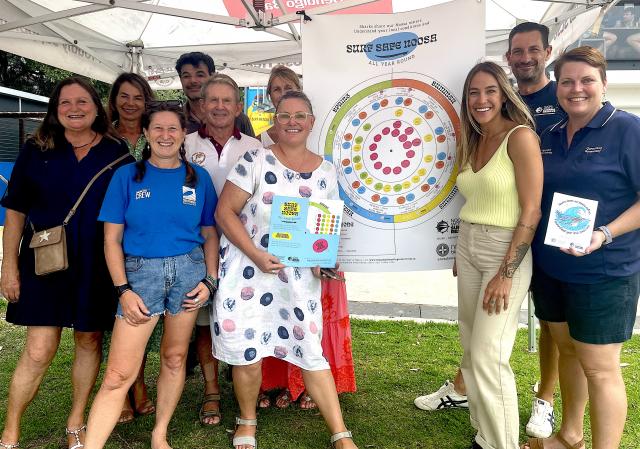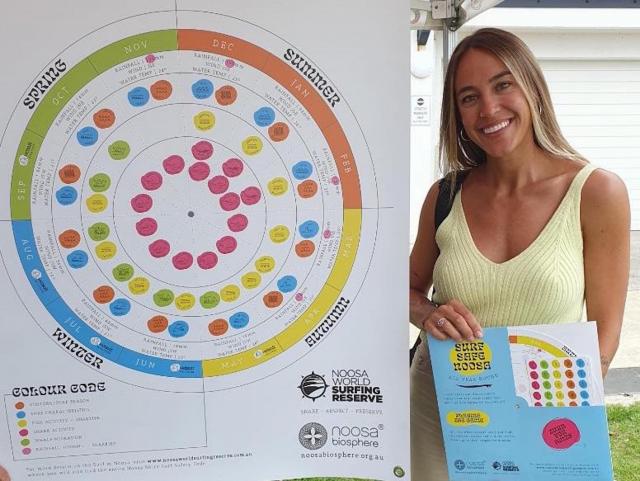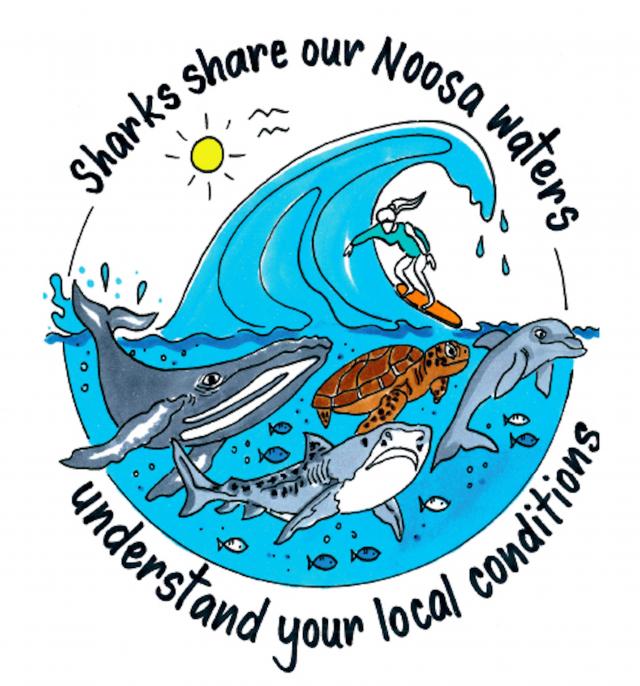Holiday season January saw the introduction of two collaborative campaigns designed to make Noosa’s beaches safer for all.
The Surf Safe Noosa campaign, nearly two years in the making, was launched at Noosa Heads Surf Club last Friday.
A collaboration between the Department of Agriculture and Fisheries’ Queensland Shark Control Program and the Noosa Biosphere Reserve Foundation, supported by Noosa World Surfing Reserve, Noosa Heads Surf Life Saving Club, Tourism Noosa and Noosa Council, the campaign is a direct result of the Marine Species Protection Symposium held in May 2021, where public education was identified as the highest priority to protect iconic marine species and keep surfers safe.
Last year Noosa Biosphere hosted two workshops involving surfing and community groups who worked with Shark Control Program leader Fiona Burnett and James Cook University’s shark expert Dr Andrew Chin to develop an educational and awareness program suitable for all ages, which was translated into a suite of graphic tools, including a seasonal calendar and interactive spinning game wheel, by local designers Puka Studios with messaging by Dr Sue Pillans.
Speaking at the launch last week, Dr Chin said: “I think this is the best and most cost-effective approach to shark management. It’s based on using common sense, taking responsibility for your actions, being aware and knowing what to do if there is an incident. This campaign sets it all out very clearly for all ages.”
Following the 2021 Marine Symposium, the state government came back with an approved program of four activities to mitigate shark risk, two of which are already in action in Noosa, with a third on the way.
Shark spotting by drone has been active on Main Beach and Noosa West since the beginning of summer, with drones doing regular 20-minute video flights during patrol hours on weekends and holidays, in conjunction with the surf club. So far the drone flights have clocked up more than 100 km with just three sightings of sharks under two metres, not enough to close the beach.
The trial of alternative drum-lines is about to be rolled out, and the highest priority activity, education, is being actioned now, designed to educate young surfers and tourists alike about how to read local conditions with the key message, “Sharks share our Noosa waters. Understand your local conditions and Surf Safe Noosa All Year Round”.
As Noosa Biosphere’s Sharon Wright noted at the launch last week: “The messaging is designed to complement the Noosa World Surfing Reserve’s mission to share, respect and preserve our special place, and to encourage surfers to follow the Noosa Shire Surf Safety Code.”
The NWSR Surf Code, which aims to promote surf safety as well as surf etiquette in crowded conditions, also received a massive boost over the summer, with the release of new television advertising and online and social media videos produced by Tewantin’s Panga Productions and supported by Noosa Heads Surf Club, Sandy Bolton MP and Tourism Noosa.
The TV schedule, seen on WIN through most of regional Queensland, ran from 12 December to 6 January, followed by a targeted social media campaign which ran through Visit Noosa.
Subsequent exposure on YouTube and the Noosa World Surfing Reserve website, recently revamped by Noosa Media, resulted in huge visitation across the board.
Of course, it’s too early to tell how many surfers actually got the “share, respect, preserve” message, but anecdotal evidence is that apart from a few flare-ups, behaviour in the surf during January’s long run of waves on the points was an improvement on last summer.









